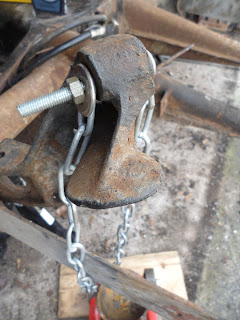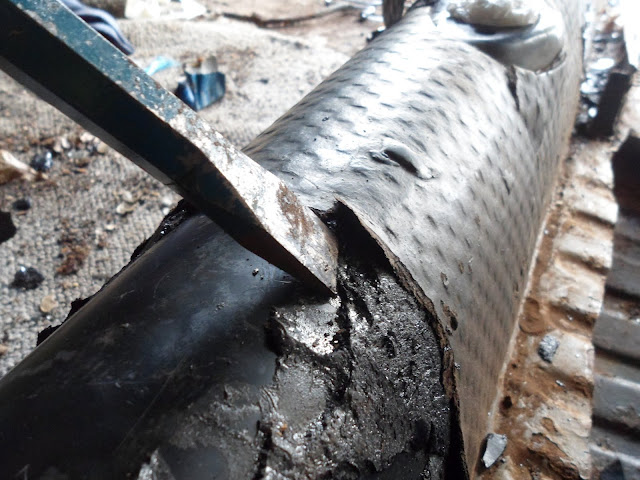Here are the dirty old kick panels that go under the rear seat;
They were looking pretty shabby, but I knew that with a bit of elbow grease they would scrub up like new. So armed with an old toothbrush and a myriad of cleaning products (that I found under my parents kitchen sink) I set about the task with gusto. About an hour later I had one all cleaned up and ready for comparison:
As I was scrubbing away it occurred to me that these are the first parts of the car that have been restored. Small progress indeed, but progress nonetheless! Another hour and another part cleaned:


























